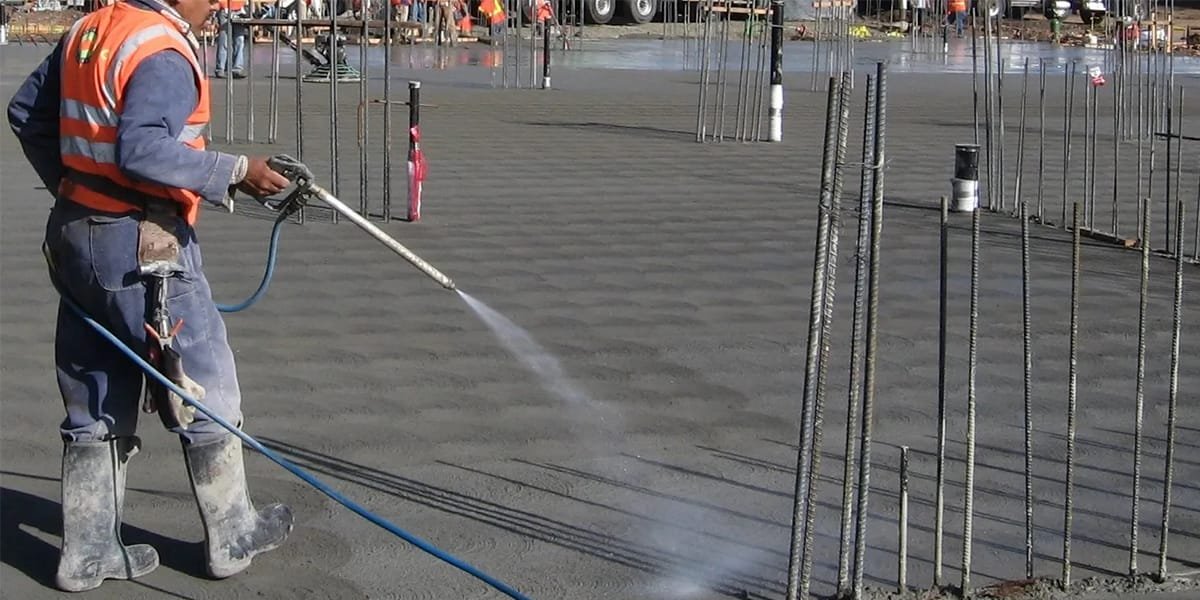
30 Dec What Is Quick Setting Concrete?
Quick-setting concrete is a useful material for time-sensitive projects. But how is it different from regular concrete? Let’s look into what it is, how it works, and where it’s best used.
Quick-setting concrete is a special mix. It hardens and sets much faster than regular concrete, usually in 10–15 minutes.
It’s ideal for minor projects and urgent repairs. Are you interested in understanding how fast-setting concrete functions? Why it’s chosen for specific projects? Continue reading for all the information.
What Is Quick Setting Concrete?
Quick-setting concrete is a special cement-based material that hardens quickly. It sets and becomes ready to use much faster than normal concrete.
Composition
Quick-setting concrete contains 50-60% Portland cement, 2-5% chemical accelerators, and 30-35% fine aggregates. It may also contain 3-7% supplementary materials like silica fume. The water content is reduced by 15-20%, and special additives are added. The precise amounts will vary with the application and the producer.
Setting Time
In the case of fast-setting concrete, hardening begins 10 to 15 minutes after mixing. Full strength develops much faster than with ordinary concrete. For a normal setting time, the initial set is 10 to 15 minutes. You achieve full strength in 24 to 48 hours.
How Does Quick Setting Concrete Work?
The magic is within complex chemical processes. After mixing with water, cement hydrates in a short time. Chemical accelerators speed up this action. They make the concrete set and harden fast.
Hydration Process
Builders use special chemical accelerators in fast-setting concrete. These additives react very fast, speeding up the process of cement hydration.
When water contacts cement, it initiates a complex chemical reaction.
It accelerates the generation of calcium silicate hydrate (C-S-H). Thus, the setting time is reduced greatly. Compared to ordinary mixtures of concrete, there is almost immediate structural hardening.
Rapid Water Evaporation
Water management is crucial for the performance of quick-setting concrete. The formulation has less water and more effective evaporation properties.
Chemical additives and special total compositions release moisture faster. This fast evaporation of water quickens setting times. It also helps develop early strength.
Controlled Mix Ratios
Getting the right mix is key to making quick-setting concrete work well. Manufacturers balance cement, water, chemical accelerators, and aggregates. This creates an optimal setting environment. The exact proportions are calculated ensuring rapid curing without weakening the structure.
Applications of Quick Setting Concrete
Quick-setting concrete solves many time-sensitive construction challenges. Its versatility makes it valuable across different project types.
Emergency Repairs
When something breaks and needs immediate fixing, this concrete saves the day. Road crews use it to patch highway damage. Structural repairs become less disruptive and time-consuming.
Fence and Pole Installation
Setting fence posts requires several days of waiting. Quick-setting concrete allows for installation and immediate use. Builders and homeowners can complete projects faster and with less downtime.
Underwater and Challenging Environments
Traditional concrete washes away in wet conditions. Quick-setting concrete maintains integrity even in challenging environments. Marine repairs, underwater construction, and wet areas become more manageable.
DIY and Home Improvement
This product is perfect for weekend warriors. Small home improvements are quicker and easier. It’s now easier than ever to patch gaps, level surfaces, and make quick installations.
Advantages of Quick-Setting Concrete
This innovative concrete solution offers many advantages beyond those of traditional concrete use.
Rapid Project Completion
Quick-setting concrete speeds up project completion with its fast curing. Traditional concrete often requires days of waiting. This specialty mix cuts that downtime.
Contractors can now do vital repairs in hours, not days. This makes projects much more efficient. We rely on this material to cut disruption and speed up project completion.
Ease of Use
Quick-setting concrete is user-friendly, yet it simplifies the calculations involved in complex construction. Even the least experienced DIYers can, with some training, get professional results.
The mix gives clear, simple instructions. It makes applying it easy and worry-free. It needs no special equipment or training. So, it’s a great solution for all kinds of construction projects.
Durability and Strength
Quick setting does not negatively affect the strength of the structure. Scientists develop such mixes through exact science. They provide great strength and durability. Advanced chemical accelerators maintain performance in the mixture. The durability of these concretes matches or surpasses that of conventional concrete mixtures.
Versatility
You can use this concrete for anything. It works for minor home repairs and major commercial construction. It performs well in a variety of environments and conditions. Variations in moisture, temperature, and surface types are less challenging.
Disadvantages of Quick-Setting Concrete
No product is perfect. There are some cons to consider about quick-setting concrete.
Limited Working Time
The rapid environment has an advantage. But, it also poses a challenge. Workers need to perform their tasks with speed and efficiency. Errors are not rectified once mixing has started.
Higher Cost
Specialty products are not cheap. Quick-setting concrete generally costs more than regular concrete. That might be too expensive for some projects on a budget.
Not Ideal for Large Projects
Large pours of concrete are not suitable for large projects. This is because the rapid set stops any reasonable spread. Traditional concrete is, thus, better for big projects.
Using Quick Setting Concrete Effectively
Proper application results in the best performance. Both pros and DIYers can get great results if they follow these important steps. These methods guarantee optimal performance as well as longevity in the concrete project.
- Prepare the Site
Site preparation is very important when applying quick-setting concrete. You should clean the work area and provide it with the proper support. It should have a stable base, free of debris or contaminants that might affect curing. Also, the surface must be free of oil, grease, and loose concrete that might hinder adhesion.
For outdoor applications, check the weather and avoid extreme temperatures.
- Mix Quickly
Quick-setting concrete imparts the demand for precision coupled with speed. So, one must read the manufacturer’s instructions before commencing work. Only use clean water at room temperature, and measure the exact ratio of water to concrete.
- Apply Immediately
Time is very important in the case of quick-setting concrete. After mixing, place the concrete right away. This will prevent it from hardening too soon. Use appropriate tools for finishing. Use trowels, screeds, or specialized applicators, depending on the project.
- Protect During Curing
Even quick-setting concrete requires careful protection during the initial curing phase. Protect the applied concrete from extreme temperatures, direct sunlight, and moisture. In hot conditions, consider light misting to prevent rapid moisture loss. In cold weather, protect the surface from freezing.
Conclusion
Quick-setting concrete represents a significant innovation in construction materials. Its quick set time opens new possibilities for repairs and installations. Understanding its strengths and limitations helps users make informed decisions. Fast, strong, and versatile, it’s changing how we approach concrete-based projects.


